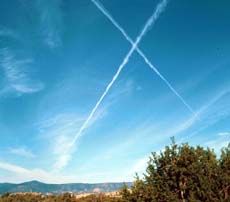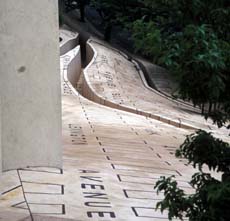index
Evaluating discontinuous places
click on images for full-size:




Travel telecom assemblage

Places constructed of bits and pieces of other places (wood sculpture Nimis by Lars Vilks, Sweden)

Discontinuous walkable maps (Yoro Site of Reversible Destiny, by Arakawa and Gins)
Discontinuous places in themselves are neither desirable nor hateful. Just as with more traditional places, their value depends on the particular qualities of their spatialities and grammars, their complexity and humaneness. Nor would it be right to say that we ought to live uniquely in continuous, or in discontinuous, places. That would be to presuppose that our ideal inhabitation should be simple and single-ply. This whole study has opposed that idea. As our actions and contexts become more complex, we live in many intersecting places at once. The connections between them cannot be sorted out into neat hierarchical or binary relations, and judgments of place quality cannot be made on any simple scale. (See Hertzberger 1991, 75ff) Judged according to criteria about their trajectories of action, social roles, and their interactions, the complexity of discontinuous places will vary depending on their place grammar. Since discontinuous places exist through linkage, the joint is the key, as in suburbia. For instance, the "global soul" travel-telecom assemblage involves thin roles, but thickness could develop at the borders where its actions meet other networks. Stressing environmental concerns would be one way to make these complexities more self-conscious. Judged according to the criteria about their explicit links and signs of insertion into larger contexts and processes, discontinuous places can be well-linked externally, or not. The travel-telecom assemblage is full of internal links but few that extend beyond its official horizons. It needs more contrast with other networks and other archipelagos of sub-places, and with the ordinary actions of more spacebound people. Its complexity could be increased by playing up internal differences of texture and character, and by finding architectural or other ways to emphasize the intersections of different networks, perhaps by creating speed bumps to make transitions more visible, and by finding architectural or symbolic ways to stimulate awareness of historical and economic context.